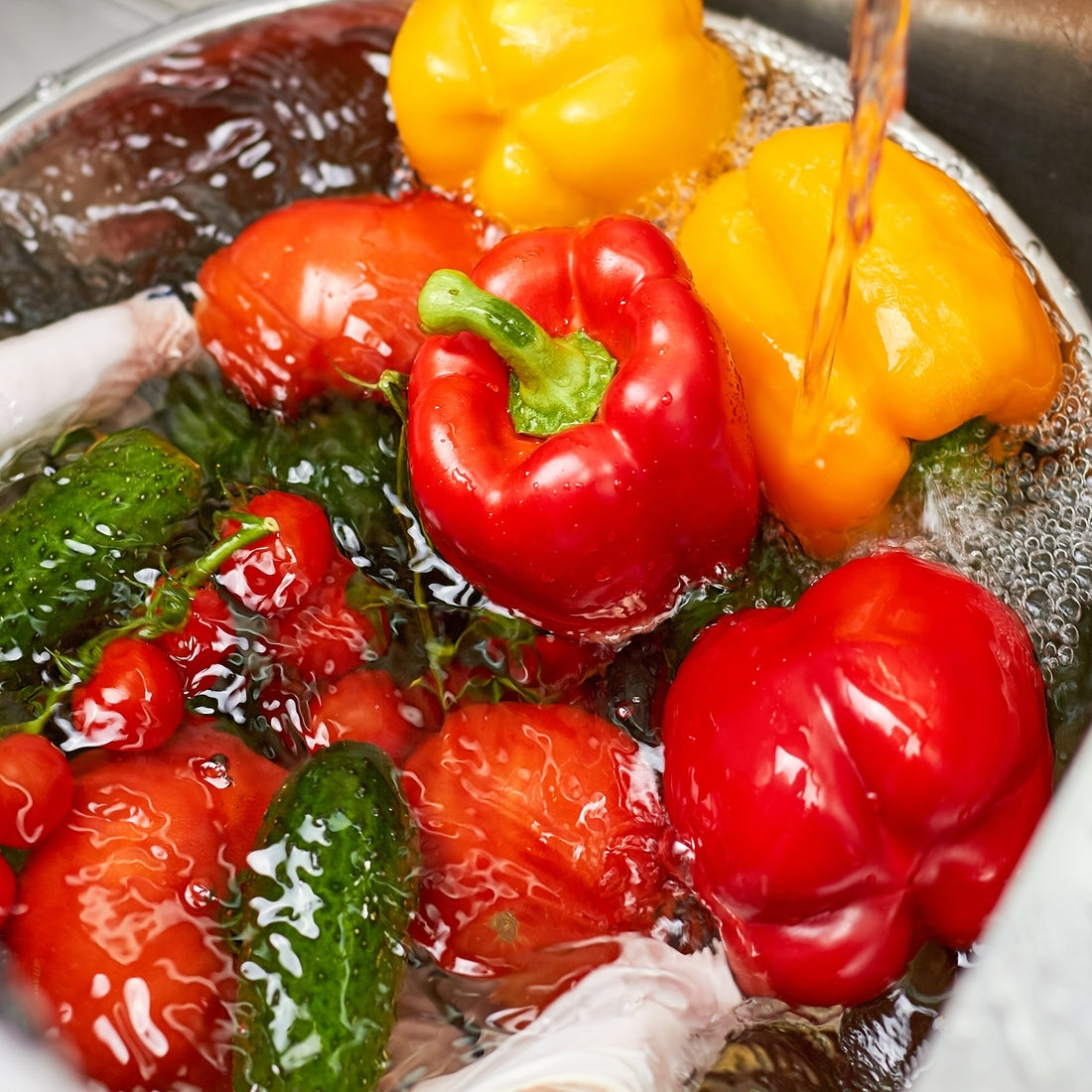The Ultimate Guide to Washing Fruits, Vegetables, and Meats: Why It Matters for Your Health

Share
The Ultimate Guide to Washing Fruits, Vegetables, and Meats: Why It Matters for Your Health
Maintaining a healthy diet goes beyond choosing nutritious foods; it also involves ensuring they are clean and safe to eat. Washing fruits, vegetables, and meats helps eliminate harmful bacteria, pesticides, and other contaminants. This guide will explore why washing your food is essential, the best methods for doing so, and how to keep your meals both nutritious and safe.
Why Washing Fruits and Vegetables is Essential
-
Removing Pesticides and Chemicals
Even organic produce can have residues from approved pesticides. Washing fruits and vegetables significantly reduces these residues, making your food safer.
- Pesticide Residue: Many fruits and vegetables are treated with pesticides that can remain on their surface. Washing helps remove these harmful chemicals.
- Organic Produce: While organic produce avoids synthetic pesticides, it may still carry contaminants. A thorough wash helps remove these substances.
-
Eliminating Bacteria and Pathogens
Produce can be exposed to harmful bacteria like E. coli and Salmonella at various points from farm to table.
- Handling and Transport: During transportation and handling, produce may come into contact with bacteria from soil, water, and hands. Washing helps eliminate these bacteria.
- Natural Contaminants: Soil and water can carry harmful pathogens that cling to produce surfaces. Washing reduces the risk of ingesting them.
-
Removing Dirt and Debris
Fresh produce, especially from farmers' markets, may have visible dirt and hidden contaminants.
- Visible Debris: Dirt and debris should be washed off to improve both appearance and taste.
- Hidden Contaminants: Even clean-looking produce may harbor unseen contaminants. Washing ensures these are removed.
Best Practices for Washing Fruits and Vegetables
-
Use Clean, Cold Water
Cold water is sufficient for removing most residues. Make sure your hands are clean to avoid adding contaminants. -
Use a Brush for Firm Produce
For fruits and vegetables like potatoes and melons, use a vegetable brush to scrub away dirt and bacteria. -
Soak Delicate Produce
Soak leafy greens in a bowl of clean water for a few minutes, then rinse under cold running water to remove any dirt or debris. -
Avoid Soap and Detergents
Soap can leave harmful residues on produce. Stick to water or natural solutions like vinegar for washing.
The Importance of Washing Meat
-
Reducing Bacteria and Pathogens
Raw meat, especially poultry, can carry bacteria like Salmonella. Washing meat can help remove bacteria from the surface, but cooking meat to the right temperature is essential for killing bacteria. -
Removing Residual Blood and Slime
Washing meat can improve taste and texture by removing any residual blood or surface slime.
Best Practices for Washing Meat
-
Use Cold Water
Rinse meat briefly under cold water, then pat dry with paper towels to remove excess moisture. -
Clean Surfaces and Utensils
Thoroughly clean cutting boards, knives, and countertops after washing meat to avoid cross-contamination. -
Consider Not Washing Poultry
Guidelines suggest not washing poultry, as it can spread bacteria through splashing water. Focus on cooking to the proper internal temperature instead.
Additional Tips for Food Safety
-
Store Produce and Meat Properly
Keep produce and meat refrigerated to prevent bacterial growth. Store raw meat separately to avoid cross-contamination. -
Use Clean Water
Ensure your water is clean when washing produce and meat. If necessary, use filtered or bottled water. -
Be Mindful of Food Recalls
Stay informed about food recalls to avoid consuming contaminated products.
Washing fruits, vegetables, and meats is a simple but vital step in ensuring the safety and quality of your food. By removing bacteria, pesticides, and contaminants, you protect yourself and your family from foodborne illnesses while enjoying fresher, healthier meals.


